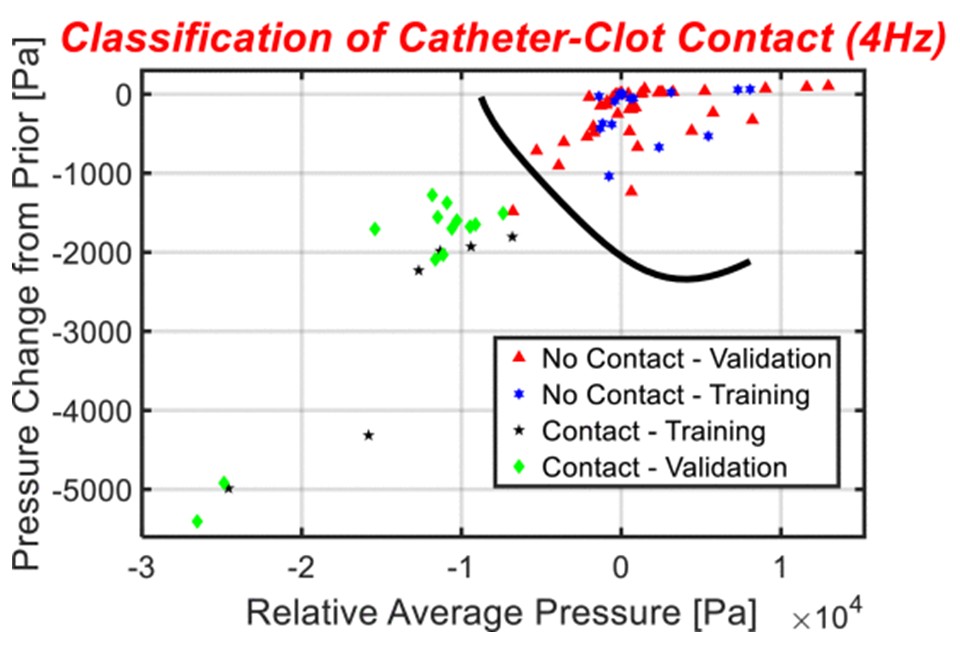Summary
During catheter-based treatments, surgeons are hampered by the limited sensory awareness of microcatheters as they move through small, fragile, and mobile blood vessels. This lack of perception leads to a success rate of 25% in
achieving complete reperfusion in a single attempt. The proposed system provides quantitative feedback on distance to the thrombus and catheter-thrombus engagement to improve operation success rates.
Addressed Need
In the United States, 795,000 people per year have a new or recurring stroke, and about 87% of strokes are caused by blocked/clogged vessels [UTMB]. The speed and extent of recanalization are the strongest predictors of good clinical outcomes following ischemic stroke treatment. However, unable to visualize the catheter tip relative to vascular anatomy or perceive engagement with clots and aneurysms, surgeons rely on the lack of blood in the aspiration catheter to gauge thrombus engagement. Because of the lack of quantitative metrics that inform surgeons of thrombus engagement, 75% of thrombectomies fail to fully re-perfuse the tissue on the first attempt, further delaying a return of oxygen to the brain.
Technology Description
To address this need, researchers at Vanderbilt have developed a catheter that uses an oscillating vacuum to gauge the distance from the catheter tip to the target. As the catheter tip approaches the target, differences in the pressure measured at the tip and at a reference arm away from the tip estimate the distance from the clot, providing valuable feedback to the operator for navigating the procedure. Once contact is made, the vacuum can then draw the clot into the catheter for removal. This design has several applications including ischemic stroke and atherosclerotic lesions in small vessels.
Competitive Advantages
1. Distance estimation from the obstruction provides surgeons with valuable feedback for proper navigation and obstruction engagement.
2. Estimating the degree of clot engagement enables surgeons to improve contact prior to removal, expediting treatment times.
3. This technology requires no additional hardware, enabling it to be used in small vascular channels.
Intellectual Property Status
Patents: Patent application has been filed.
Publication: TBME, 2024
Stage of Development
Benchtop testing has been completed.

Data from a benchtop arterial phantom shows that changes in pressure create a near-perfect delineation in catheter contact vs non-contact with a clot.




